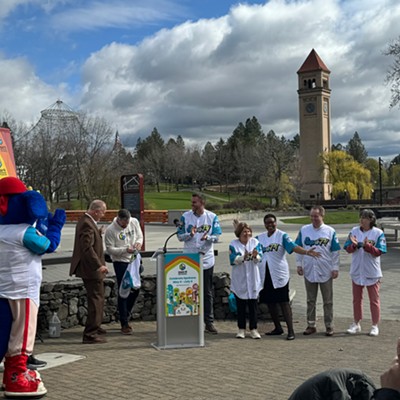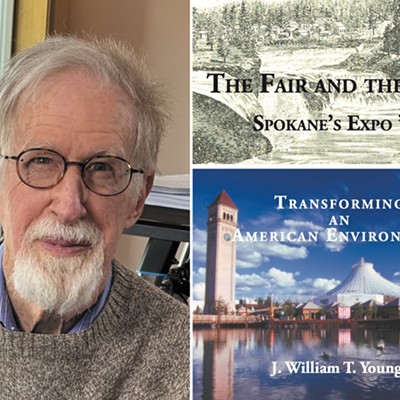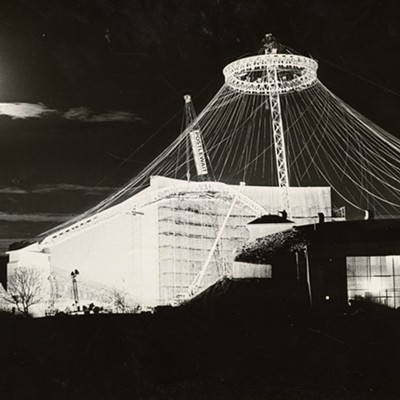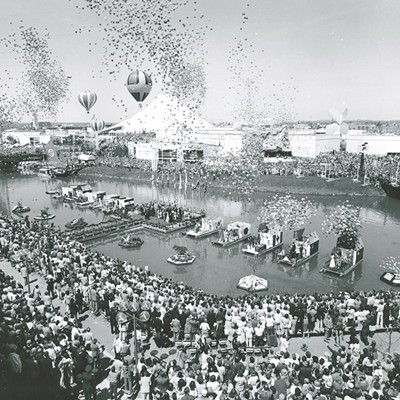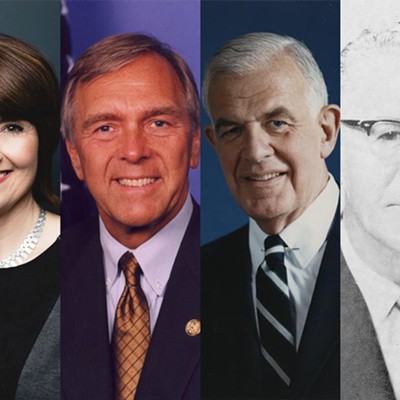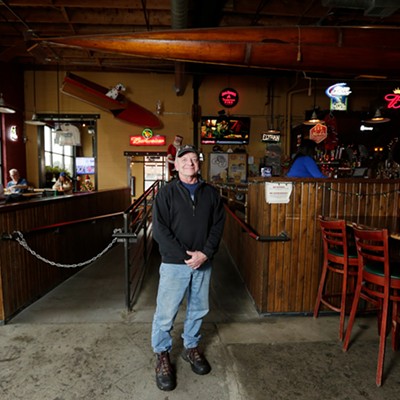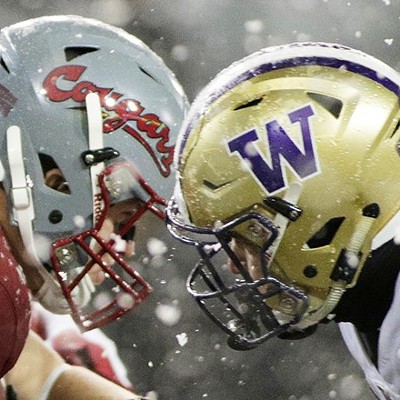On Expo ’74’s opening day, six days from my ninth birthday, I remember standing in brand new beauty bark, waiting to get up on my dad’s shoulders to catch a glimpse of President Nixon — he was a speck, but there he was. I asked the grownups if they brought in the river just for the fair — guess I’d never seen it before. When they let all the balloons go, it was cool, but I wondered where they’d all land. And I remember being able to look out our attic window every night, just over the tops of the pine trees, to see the fireworks that closed the fair each night. I didn’t grow up knowing *how* Expo was done, I just grew up knowing it could be done.
I’m the last person to encourage any kind of sappy “Back during Expo…” talk, but after reading Bill Youngs’ *The Fair and the Falls*, an excellent new history on Spokane’s World’s Fair, I realize the episode not only deserves most of the reminiscing it gets, but also provides important lessons on how to succeed as a community.
What was so special about Expo ’74? Beyond all the tourists and official commemorative dinnerware and Up With People performances, it was about urban renewal — saving the city from mediocrity and decline. The fair, Youngs’ book points out, was a grandiose means to a grandiose end — the reclamation of the Spokane Falls as a public amenity.
In 1874, 100 years before the world came to Spokane, Spokane pioneer William Cowley was able to sit all alone by the falls. In his diary, he wrote that he had found what “seemed to be the setting of an ideal city — even a corner of Paradise.” In the years following his vision, Spokane did its best to hide those inspiring falls. By the 1960s, the falls were a forgotten part of the city’s landscape, obscured by industry led by people who, in accordance with the time, thought the natural world’s bounty was a limitless resource. But civic leaders started to understand how much was being squandered by the decisions — usually of mere expedience — made by previous generations. In undertaking Expo ’74 and the urban renewal that came with it, those leaders were refuting that past for a better future. A lasting lesson of Expo is that mistakes of our ancestors should be understood and perhaps even forgiven, but that we don’t have to live with them. We can, in fact, fix our mistakes — from racism to building cities that don’t work — and should even make a policy of it. (The difficulty, lately, is agreeing on what are mistakes and what constitutes progress.)
It’s quite fitting, then, that Expo adopted the theme of ecology, which requires a relatively new way of looking at the world. That all this transpired in stodgy old Spokane is a bit hard to believe today. Sure, some of it was simply grabbing a concept that would wow the powers that be in the world’s fair universe. Once adopted, however, the city had to stick with the theme, which as Youngs’ book documents so well, led to more than a few healthy instances of clashing cultures (the kind we need more of even today). Long-haired environmentalists were suddenly at the table with the city’s good old boys, and people realized they were going to actually have to live up to the fair’s theme by cleaning up the river and recycling.
The combination of the lofty theme and the fair itself made that brief span of years noteworthy because nearly everyone was pulling on one rope in the same direction. Dozens of factors prevent the replication of an Expo, but the fair stands as proof of what can be sone when all efforts are coordinated. What will inspire people to come together like that again is a question worthy of study. Certainly the nobility of the theme helped, but the promise of building something for everyon — something great like Riverfront Park — obviously played a big part, too.
In simply articulating a common goal, those Spokanites of 25 years ago had us beat. Expo allowed the citizens to focus on what they had in common with each other rather than what separated them. If nothing else, the World’s Fair should be held up as the example for how to bring people together.
So now Expo is the benchmark. Who would think you could top it? Well, since Expo, Spokane has seen other similarly amazing efforts, like Bloomsday, Pig Out in the Park and Hoopfest. While these great events have succeeded in living up to Expo’s standard of community involvement and recreation, the remaining challenge is to aspire to something bigger, as the fair’s theme of ecology did. Sure, everybody loves a good party, but the brilliance of Expo was that it not only entertained by enlightened its participants. Spokane should, whenever appropriate, use the Expo blueprint to build a strong community, from fun times like Bloomsday to the serious work of solving tough social problems.
Expo and the good it brought came through a sheer act of will, born of a desire to clean up the city. Perhaps more important than Riverfront Park and all those World’s Fair memories, the men and women who brought us Expo taught us that we can, through cleverness and hard work, control our own destiny.



